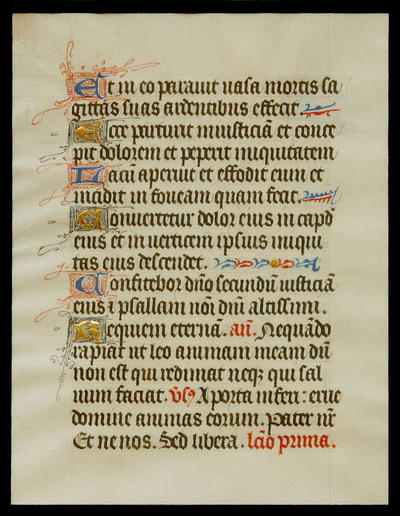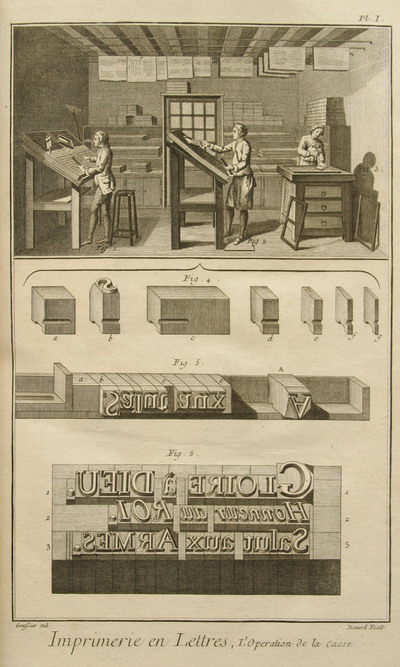In 1436 Johaness Gutenberg, a German goldsmith, began designing a machine capable of producing pages of text at an incredible speed—a product that he hoped would offset losses from a failed attempt to sell metal mirrors. By 1440 Gutenberg had established the basics of his printing press including the use of a mobile, reusable set of type, and within ten years he had constructed a working prototype of the press. In 1454 Gutenberg put his press to commercial use, producing thousands of indulgences for the Church. The following year he printed his famous 42-line Bible, the first book printed on a moveable type press in the West.1
Gutenberg's press was the combined effort of several discoveries and inventions. The printing press was built around the traditional screw press, a precursor to today's drill press, with an added matrix on which individually-cast letters and symbols could be arranged to form the desired text. This moveable type design allowed pages of text to be quickly assembled from a pre-cast selection of letters and symbols rather than laboriously carved from a block of wood as in the block printing method. Gutenberg also created a unique oil-based ink which transferred from his metal type to the printing substrate much more effectively than the water-based inks that other printers of the era used. In order to print a page, Gutenberg would arrange the necessary letters on the matrix and coat them in his ink. The matrix was then mounted on the contact end of the modified screw press and lowered until it struck the paper underneath. The process, while labor intensive, allowed Gutenberg to print pages at a much greater rate than printers using the block printing method or those doing manuscript work.2
Johannes Gutenberg's moveable type press marked the beginning of the Printing Revolution in the western world, a colossal moment in the history of information and learning. With access to printing presses, scientists, philosophers, politicians, and religious officials could replicate their ideas quickly and make them available to large audiences.
Notes
- Kapr, Albert. Johannes Gutenberg: The Man and His Invention (Aldershot, England: Scolar Press, 1996). Return to text ↑
- Scholderer, Victor. Johann Gutenberg: The Inventor of Printing (London, England: Trustees of the British Museum, 1963). Return to text ↑

Manuscript leaf embellished by hand with red, blue, and gold. 1496. More images here

Matrix containing moveable type. More images here
